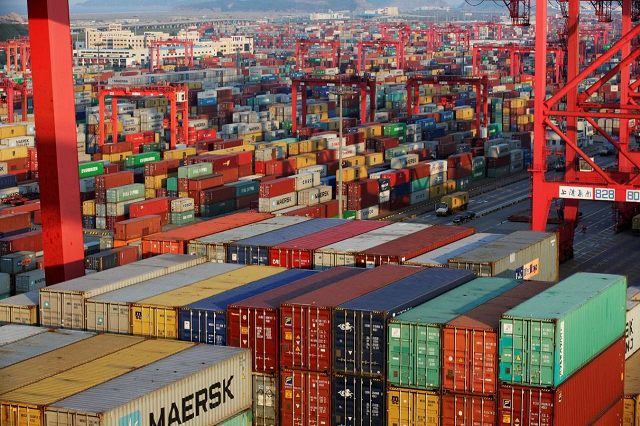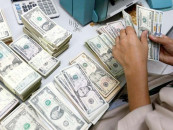Govt should prepare home-grown plan to refuel economy
New setup will have to surmount scores of economic, financial challenges

The economy is in the grip of a worsening balance of payments situation where foreign exchange reserves are just enough to cover hardly two months of imports.
PHOTO:REUTERS
The first and foremost challenge is the financial one is balance of payments. The economy is in the grip of a worsening balance of payments situation where foreign exchange reserves are just enough to cover hardly two months of imports.
The deteriorating situation has already prompted four rounds of depreciations where the rupee lost around 22% of its value against the US dollar.
Most of the media commentators, analysts, economists and even officials of the State Bank of Pakistan (SBP) have been watching this development favourably. The usual argument is that the rupee has found its true value, however, its effects start to appear with a lag.
This kind of reasoning is the continuation of the standard economic thinking that depreciation will make exports cheaper and imports dearer. This adjustment will eventually help in improving the trade deficit, lessening the current account deficit and bolstering the foreign exchange reserves.
This kind of argument doesn’t pay much attention to how the economic system will adjust. The onus of the adjustment will fall on the real economy. If financial part of the economy experiences difficulties as the current situation depicts, the real economy will eventually suffer since financial and real sectors are interlinked.
Since the burden of adjustment will fall on the real economy, the multilateral institutions have already revised down their economic outlook for Pakistan. These institutions are of the view that the real gross domestic product (GDP) will grow around 5% in fiscal year 2018-19 despite a high growth rate achieved in 2017-18.
Pakistan posts 5.8% growth rate
The economy of Pakistan is constrained by balance of payments. Whenever real GDP grows above 5%, cracks start to appear on the external front. This situation reflects that Pakistan’s export structure does not support growth of the real economy beyond a certain threshold.
The low-income elasticity of exports constrains the growth. This also implies that real growth in GDP above 5% requires foreign borrowing. That is the reason the economy had to seek around $11.5 billion in external financing in FY18.
Every political opposition raises hue and cry about the horrors of debt without knowing the economic realities. When these parties come to power they follow the trail blazed by the preceding government. This time is not even different. The new political administration will have to follow footprints of the predecessor.
World Bank sees Pakistan’s economy slowing next year
In this vein, the stage has been set by the current caretaker government by letting the rupee find its so-called equilibrium value. These actions can easily be justified on the basis of standard economic theory.
However, the structural characteristics of Pakistan do not support the propositions if history is the guide.
Economic growth depends on foreign credit as savings stay low
During 2002 to 2007, the rupee remained strong vis-a-vis dollar and there were growing calls that the currency had become overvalued and the economy required an abrupt devaluation. The currency was allowed to fall extensively in 2008 and the burden of adjustment fell on the real economy in the form of low GDP growth.
Similarly, from September 2013 to December 2017, the rupee was not allowed to weaken against the dollar and repeatedly questions were raised about the currency’s overvaluation.
As a consequence, bouts of depreciation occurred and it is being hoped that the situation will improve as the time goes by. This time too, the burden of adjustment will fall on the real economy. In a nutshell, the upcoming challenge for the new political government is to prepare a home-grown programme to refuel the engine of economy as an International Monetary Fund’s (IMF) programme is the eventuality. If the programme is not home grown as happened previously, the new government should prepare itself to face the criticism of aspiring youth.
The writer is an Assistant Professor of Economics at SDSB, Lahore University of Management Sciences (LUMS)
Published in The Express Tribune, July 30th, 2018.
Like Business on Facebook, follow @TribuneBiz on Twitter to stay informed and join in the conversation.



















COMMENTS
Comments are moderated and generally will be posted if they are on-topic and not abusive.
For more information, please see our Comments FAQ